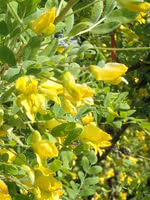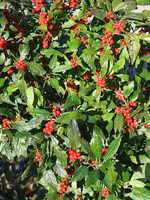Mon-Fri 9am - 5pm Mountain time
Common Caragana vs Winterberry
Caragana arborescens
Ilex verticillata
CUSTOM GROW
Common Caragana is a fast growing shrub that's known for its exceptional hardiness and drought tolerance. Although it's most commonly planted in shelterbelts, Common Caragana is also an excellent hedge or feature shrub.
Note: in warmer areas, this species can be difficult to contain once planted. Use the right plant in the right place.
Winterberry is a small shrub that produces large quantities of bright red berries that remain on the plant through the fall and into the winter. Adding this shrub to your yard will give it a unique splash of color and attract birds, especially after the leaves drop.
Note: although the foliage is attractive on its own, you need at least one male plant near your female plants or they won't produce berries.
Common Caragana Quick Facts
Winterberry Quick Facts
In row spacing: 0.3 m (1.0 ft)

